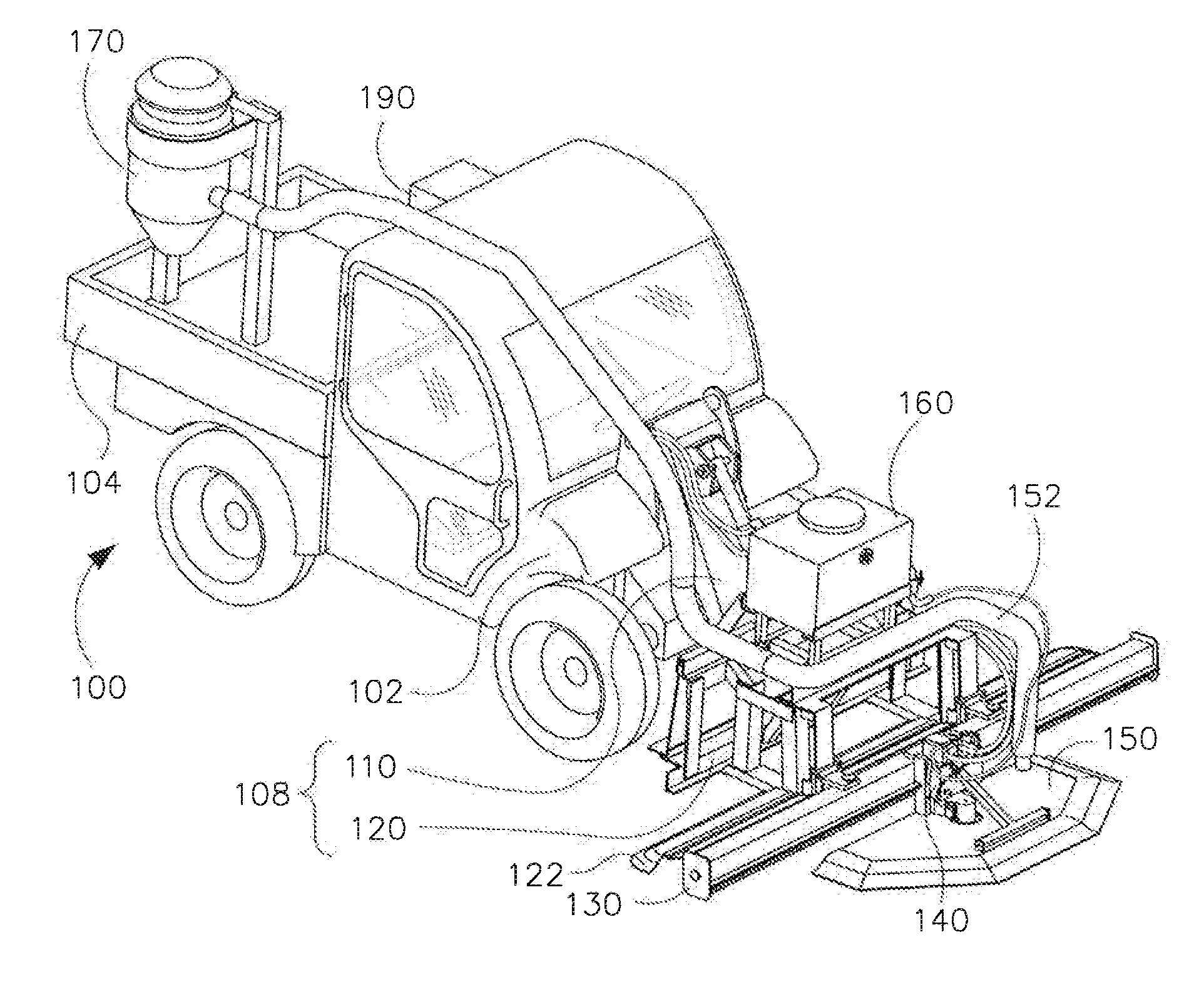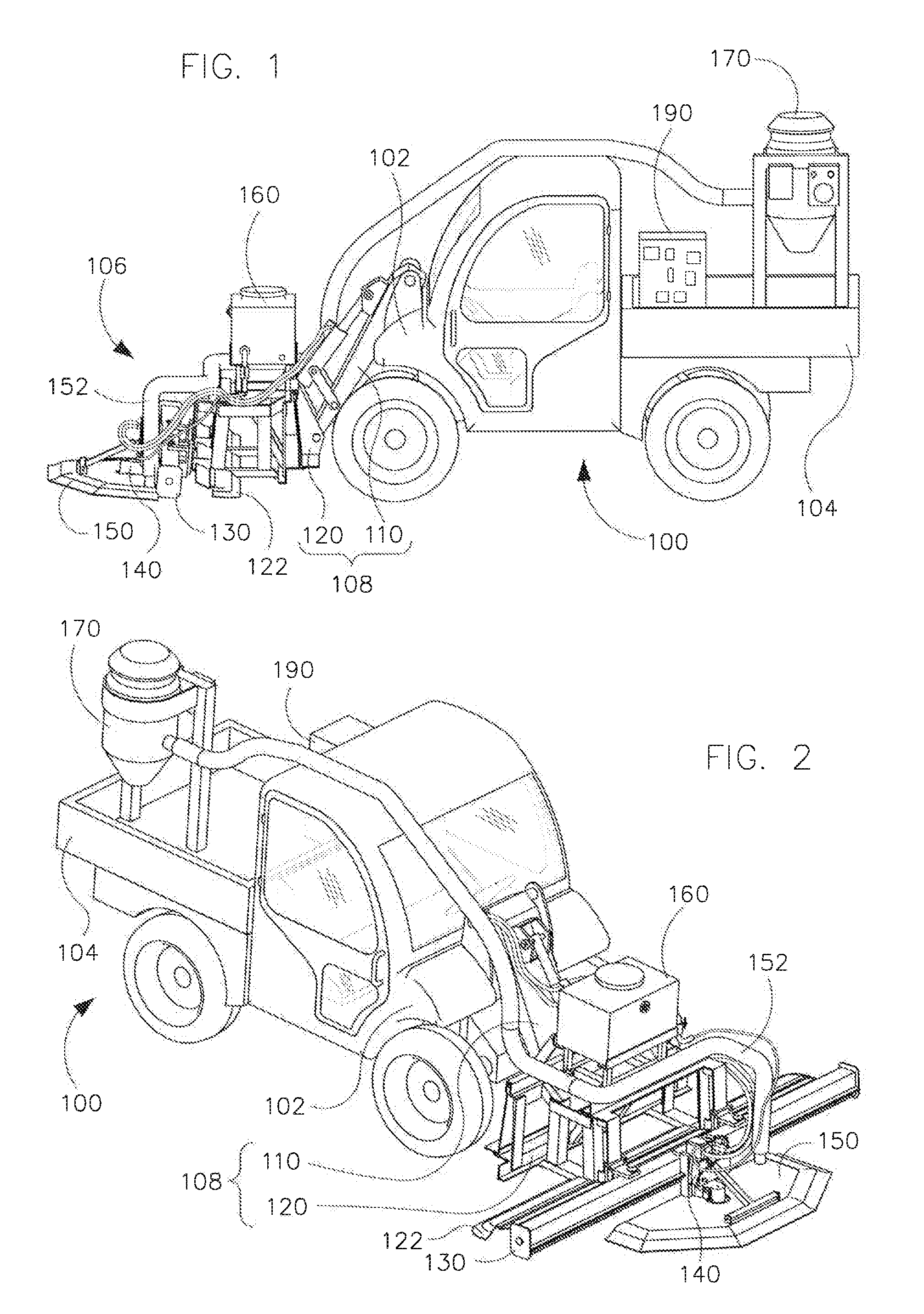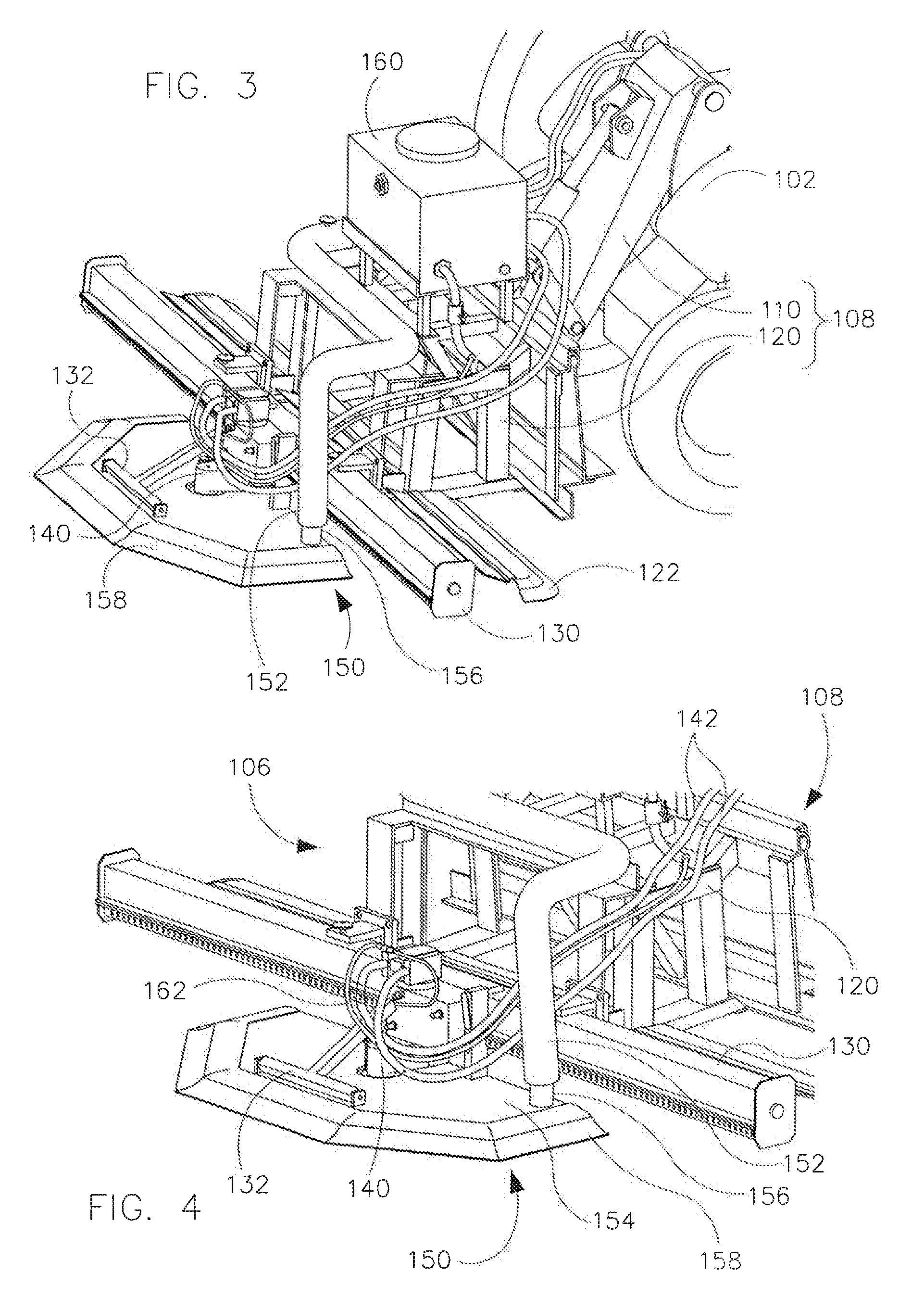[0007]One early solution to these problems, as shown in U.S. Pat. No. 5,116,162, was to
grind away only the offending offset. However, this was
time consuming, not significantly less expensive, and created substantial amounts of concrete dust, which is a
health hazard itself. In response to these problems in
grinding away the offending offset, as shown in U.S. Pat. No. 6,863,062, a further solution was to
cut away the offending offset using a rotating concrete saw and blade, by plunging the blade into the top surface of the concrete slab. This solution avoided creating as much concrete dust, and the actual concrete
cutting is less
time consuming than
grinding away the offending offset. However, moving the concrete
cutting device disclosed in the 062 patent from one trip hazard location to the next and setting up that concrete
cutting device at each trip hazard location was itself time consuming and complicated.
[0008]Other solutions directed to concrete cutting, such as those shown in U.S. Pat. Nos. 6,827,074; 6,896,604; 7,000,606; 7,143,760; 7,201,644 and 7,402,095, use hand-held right-angle grinders to
cut off the offending offset, again by plunging the saw blade into the top surface of the concrete slab. Using hand-held right-angle grinders does not require long set-up times and allows the workers to quickly and easily move from one trip hazard location to the next. Additionally, because the blades
usable with a hand-held right-
angle grinder are much smaller than those used by the concrete cutting device disclosed in the 062 patent, they are less expensive.
[0010]Thus, the conventional solutions require either using
grinding, which is time consuming, expensive, and creates substantial amounts of concrete dust, relatively-fixed
machine cutting, which consumes substantial amounts of time in setting up and moving the cutting
machine, or
hand held cutting, which is labor-intensive (and thus expensive) and which consumes substantial amounts of time in actually cutting away the offending offset. What is needed are systems, machines, devices and systems that are able to quickly remove the offending offset, that are able to quickly and easily move from one trip hazard location to the next, that are not labor intensive, that do not create substantial amounts of concrete dust, and / or that are substantially less expensive than current solutions.
[0018]In various exemplary embodiments according to this invention, a guide rail and an associated hydraulic concrete saw head and saw blade are mounted onto a small utility vehicle that can easily move the saw head and guide rails along a hard-surfaced pathway from one trip hazard to another. In various exemplary embodiments, the utility vehicle has a hydraulic power
system that is sufficiently powerful that it can drive the hydraulic saw head without overheating during normal use on a typical summer day. In various exemplary embodiments, a support structure is provided between the utility vehicle and the guide rails, which are mounted to the controllable support structure.
[0019]In various exemplary embodiments, the support structure allows the utility vehicle to picked up the guide rails and saw head, easily moved them from a current location to a next location and place them so they are ready to
cut off the offending offset at that next location. In various exemplary embodiments, the support structure automatically locates the guide rails and the saw head relative to a lower slab of the hard-surfaced pathway so that the location and angle of the saw blade are appropriate to create one or more appropriate transition surfaces between the offset portions of the hard-surfaced pathway.
[0022]The hydraulic power
system is turned on to drive the saw head and rotate the saw blade. An arm of the saw head is then rotated to move the saw blade from a disengaged position to an appropriate cutting position. The saw head and blade are then moved along the guide rails to cut into the upwardly offset portion of the hard-surfaced pathway. The cut is begun at one lateral edge of that upper portion at the full depth of the cut, i.e., the cut extends at the correct angle from the surface of the upper portion to the surface of the lower portion, such that the saw blade removes the trip hazard, in a
single pass. The saw head and blade moved, either by hand or by another motor, along the guide rails to the other lateral edge of the upper portion, As a result, in
one pass, the trip hazard is removed and an appropriately-sloped transition surface is created between the upper and lower portions of the hard-surfaced pathway.
 Login to View More
Login to View More 


